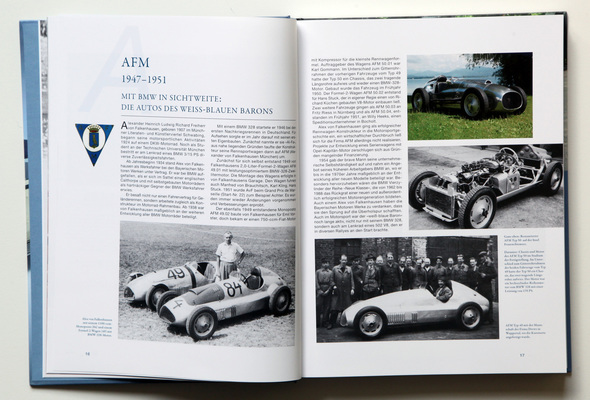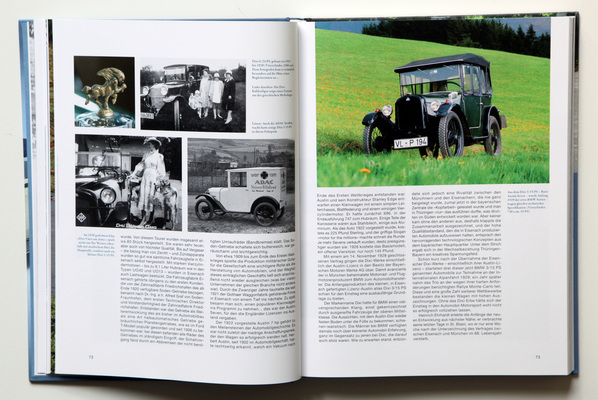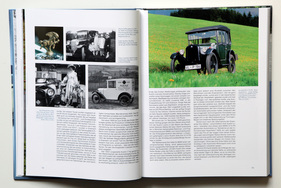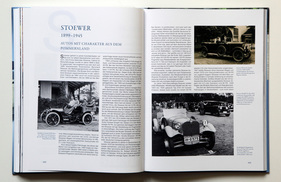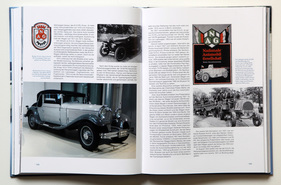Do you know Apollo, AWS, Colibri, Dürkopp, Falke, Hexe, Lux, Miele or Staunau? Some names may sound familiar, but usually only historians or people who can look back on a long life recognize them as German car brands. But, just like other countries, Germany also has a very rich automotive history.

Hundreds of brands have emerged and disappeared, but only four car manufacturers that built vehicles in Germany before 1914 have made it into the modern era: Audi, Ford, Opel and Mercedes. Many of them, including those mentioned above, only survived for a few years or decades, but left behind a rich legacy that has unfortunately almost been forgotten. Halwart Schrader's book "Vergessene Autos - erloschene deutsche Marken" (Forgotten Cars - Extinct German Brands) aims to put an end to this.
Around 140 defunct brands in a new light
Schrader presents around 140 brands and their products on almost 300 pagesAlphabetically ordered, the stories are told from Adler to Zündapp and even the car connoisseur learns many new things about the former German car brands.
However, not only brands from the early days of the automobile are mentioned, but also manufacturers that presented their models at the IAA just a few decades ago, such as Bitter, Maybach, Melkus, Treser and Thurner. And the car manufacturers from the former GDR are not left out either.

Schrader had to limit himself, after all, he didn't want to edit a 600-page book that would hardly have been cost-effective. As a result, some brands fell by the wayside. The author lists some of them in the foreword: Alfi, Alfright, Biene, Bob, Bohse, Bungartz, Corona, Fadag, Hawa, Heim, Peter-Moritz, Reißig, Stolle, Spiegler, Taunus, but also Keinath, Buchmann and other refiners. We would have added three more to the list, namely Artega, Gumpert and Wiesmann, all highly praised former darlings of the German motoring press. But perhaps these three brands in particular are still too new for a book like this, especially as you can never be quite sure whether they are really already rightly forgotten or whether they will be exhibiting again at the next IAA.

The one- to eight-page brand histories at the end of the book are supplemented by a further 50 pages on German coachbuilders, without whom many a car would not have existed. Here, too, there are well-known names such as Baur and Karmann, but also long-forgotten ones such as Buhne, Hornig and Vetter.

And it should not go unmentioned that there is a five-page index of keywords as well as a list of photo sources.
Valuable image material
In addition to the excellently written texts, the many valuable archive photos from the past of the German car industry make the book a real gem. There are 456 wonderful black-and-white photos to admire here.

They are supplemented by mostly modern color photographs, which are not always perfectly successful and which, as an automobile historian, one would of course have liked to have exchanged for more (or larger) black-and-white pictures "from the time". Unfortunately, the historical pictures are completely missing for a few brands, such as Lorenz & Rankl (keyword Silver Arrow) or Melkus, where the original RS 1000 is regrettably not shown.

But this is criticism on a high level, because most of the chapters are excellently illustrated. And when else can you see a Miele automobile from 1912/13 in a photo or the Pasing limousine from 1921?
The perfect complement
Schrader's book is the perfect complement to Gloor's lost brands ( also published by Motorbuch Verlag) and many a reader would no doubt immediately wish for an addition of British, Italian or French manufacturers, some of which also existed in the universe of over 10,000 brands.
Of course, EUR 69.00 is no small price to pay, but the 352 pages convey a great deal of knowledge and are an entertaining read for the long winter evenings ahead.
And where else can you quickly find interesting facts about Hanomag, Hansa, Kleinschnittger, Lutzmann, Mars, NSU, Steiger or Stoewer in a book if not in Schrader's new work?

Bibliographical information
- Title: Forgotten Cars - Extinct German Brands
- Author: Halwart Schrader
- Language: German
- Publisher: Motorbuch Verlag
- Edition: 1st edition, August 2017
- Format: Hardcover, 230 x 305 mm
- Scope: 352 pages, 456 black and white and 221 color images
- ISBN: 978-3-613-03996-4
- Price: 69.00 €
- Order/buy: Online at amazon.de, online at Motorbuch-Verlag or at the relevant bookstore



